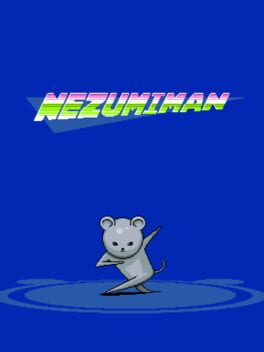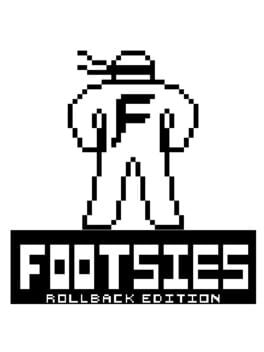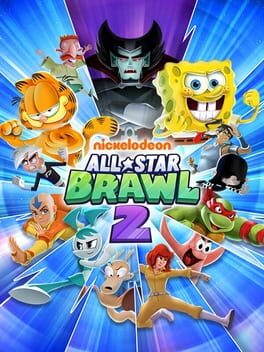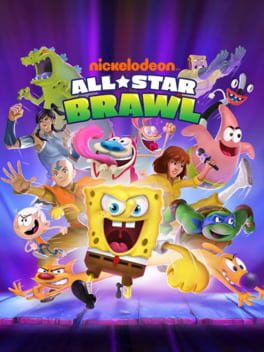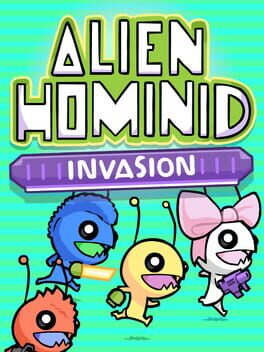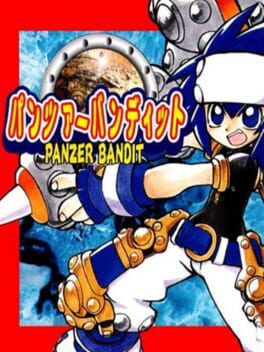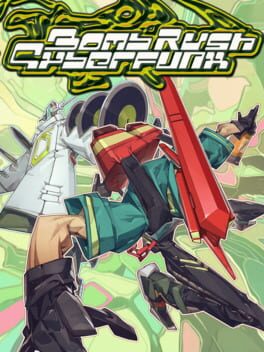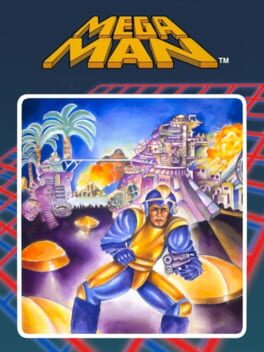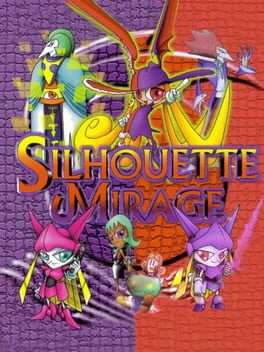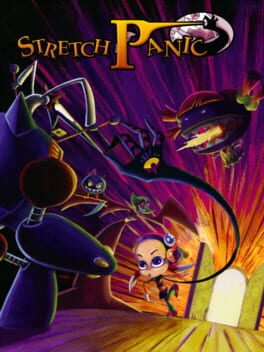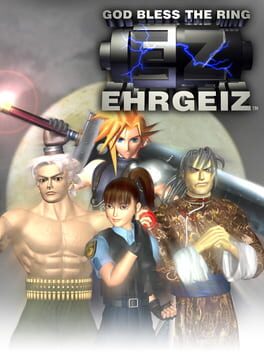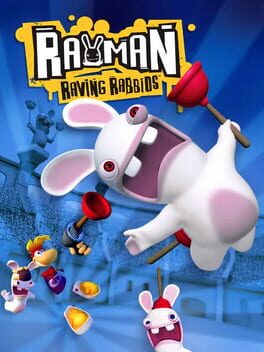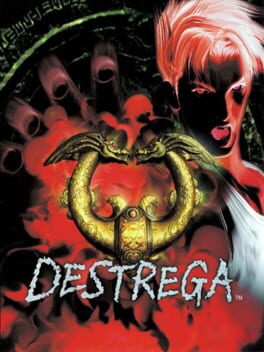knowledgeofself
2008
Very fun sandbox style game. It sort of occupies the kind of space in my mind as something like Hyrule Warriors in it's excess-- except it's actually good. Somehow Treasure made a structure-less game with few constraints interesting. The few tools you can choose, have you always approach each level with a different set of emergent tactics. Enemy AI is pretty smart with how it positions itself. Even things like time freezing-- you'd think would break the whole balance of the game, end up having it's own natural drawbacks. Like inadvertently trapping yourself with your bombs, or even in your own hit-stop if you're using the melee weapons. It's also just a very comforting, sincere game to me.
2009
Quite interestingly, I think this is much better than any classic Mega Man title. A big problem with Mega Man is that a lot of it's design has to be very particular in order for it's own rules to not collapse in on themselves. Things like enemy layouts, stage traversal, and boss design have to be designed in a way where you can complete it with just the base shot type and none of the other weapons. It sounds like a fine start enough. This kind of design begs the question of how everything interacts, but Mega Man never feels too invested in this. Most Mega Man games have long periods of basically no gameplay within the stage-- and then you fight a boss where it can go 2 different ways;
Either the boss has a very stock pattern it doesn't ever drop, that makes it more of just an extended stage obstacle rather than a real fight or:
The boss just runs at you and jumps haphazardly, and the only way to deal with it at all is by trapping it in a loop. Because your player hurtbox is intentionally so big and their projectiles are so tall that, you can only avoid something by proactively jumping// But their movement covers your jump, so you'd think it's a game that prioritizes great positioning in advance, but it doesn't really. It's just boring nonsense.
Nezumi Man is a small game made for a contest back in 2009. Nezumi Man is much stronger than Mega Man in spite of him being a mouse-- he can crouch! This game's charm I always loved. It's nice to just come back to it, and although it may not be anything too crazy it's a lot simpler than most of Mega Man's outings, which works to it's benefit. A lot of the encounter design in this game is less meaningless as well, and every ability is useful and fun to use.
Either the boss has a very stock pattern it doesn't ever drop, that makes it more of just an extended stage obstacle rather than a real fight or:
The boss just runs at you and jumps haphazardly, and the only way to deal with it at all is by trapping it in a loop. Because your player hurtbox is intentionally so big and their projectiles are so tall that, you can only avoid something by proactively jumping// But their movement covers your jump, so you'd think it's a game that prioritizes great positioning in advance, but it doesn't really. It's just boring nonsense.
Nezumi Man is a small game made for a contest back in 2009. Nezumi Man is much stronger than Mega Man in spite of him being a mouse-- he can crouch! This game's charm I always loved. It's nice to just come back to it, and although it may not be anything too crazy it's a lot simpler than most of Mega Man's outings, which works to it's benefit. A lot of the encounter design in this game is less meaningless as well, and every ability is useful and fun to use.
In a way it does it's job of communicating what footsies is, in another way it doesn't. You see this with games like Fantasy Strike, where there's a lot of aspects of conventional fighting games stripped away with the intention of serving as like a training wheel game for newer players. This is mostly a misguided effort though. In reality, when you do this at it's barest it makes the game more esoteric to newcomers, because you can't grind footsies in training mode, and more experienced fighting game players are a lot better at dealing with the abstract.
This game is so simplified it somehow doesn't run into this issue though, the play field is too raw. Any person will immediately know what's up after fiddling with it for a few seconds because you can only walk back and forth, and the win condition is the same for both players and very simple.
This setup does betray what 'footsies' entails kind of though. On one hand, it gets the superficial aspects correct. Establishing ranges, general placement of moves, and shimmying. The problem though, is footsies although abstract/mostly game agnostic, is not divorced from the properties of moves, or-- some might say this is antithetical- jumping. It's not really footsies if you can't jump, as bizarre as this may sound. It matters in tandem with hitbox design because it's not footsies if there isn't some high risk/high reward aspect that works mostly in parallel to it. The 2 normals you have are a cl.LK and a cr.MK. Kind of bizarre but interesting choice actually. Except there's a baffling design choice where the cl.LK hits low and can't step over the cr.MK despite the motion implying it would. This makes the one hitbox interaction that could happen more shallow for no reason, as you lose if you trade with either of the 2 specials.
You can do a raw donkey kick or DP in this game, but what's the point? What's the point of anything if you can just hug the corner and wait til they whiff something? Actually participating in the footsies in this game is somehow a bad choice despite it being the main conceit of the game. It kind of makes you realize that a lot of fighting games don't really have any good reason for you to get hit aside from character game plans intersecting, which is honestly fine enough. I said that it kind of does it's job in communicating what footsies is, and it does approximate that. You could say I'm reading too much into it, but any person can learn footsies from like SF2. Kids did in the 90s. That game while having many of it's own complexities is simple enough to where 2 people playing it will over time have to develop footsies. It's necessitated by the greater structure of character kits and hitbox design. You don't have to make a full game to communicate this concept, but if you go this slimmed down it isn't exactly footsies anymore.
This game is so simplified it somehow doesn't run into this issue though, the play field is too raw. Any person will immediately know what's up after fiddling with it for a few seconds because you can only walk back and forth, and the win condition is the same for both players and very simple.
This setup does betray what 'footsies' entails kind of though. On one hand, it gets the superficial aspects correct. Establishing ranges, general placement of moves, and shimmying. The problem though, is footsies although abstract/mostly game agnostic, is not divorced from the properties of moves, or-- some might say this is antithetical- jumping. It's not really footsies if you can't jump, as bizarre as this may sound. It matters in tandem with hitbox design because it's not footsies if there isn't some high risk/high reward aspect that works mostly in parallel to it. The 2 normals you have are a cl.LK and a cr.MK. Kind of bizarre but interesting choice actually. Except there's a baffling design choice where the cl.LK hits low and can't step over the cr.MK despite the motion implying it would. This makes the one hitbox interaction that could happen more shallow for no reason, as you lose if you trade with either of the 2 specials.
You can do a raw donkey kick or DP in this game, but what's the point? What's the point of anything if you can just hug the corner and wait til they whiff something? Actually participating in the footsies in this game is somehow a bad choice despite it being the main conceit of the game. It kind of makes you realize that a lot of fighting games don't really have any good reason for you to get hit aside from character game plans intersecting, which is honestly fine enough. I said that it kind of does it's job in communicating what footsies is, and it does approximate that. You could say I'm reading too much into it, but any person can learn footsies from like SF2. Kids did in the 90s. That game while having many of it's own complexities is simple enough to where 2 people playing it will over time have to develop footsies. It's necessitated by the greater structure of character kits and hitbox design. You don't have to make a full game to communicate this concept, but if you go this slimmed down it isn't exactly footsies anymore.
platform fighters are very difficult to design! there's a lot of issues but the 2 root causes are the absurdly massive design space needed to create one (at least one approaching the polish of any smash entry), and the normals. every platform fighter character has the same inputs, whereas they have up attacks, down attacks, neutral attacks, etc. designing a characters moves in aesthetic and function around this core setup doesn't always work, and generally deviating from tools you'd expect a character to have only makes your character worse. for whatever reason, when people make these games there isn't a focus on system level counters to certain things, so in every platform fighter there's always a few matchups where one character is entirely ill equipped to deal with a certain thing.
i'm digressing a bit, but it's kind of frustrating that there's quite a number of these melee inspired games, games built off 2 decades of hindsight aping the least polished entry in a different franchise. it's not that it's melee inspired that's the issue, it's that there's a very high level of tunnel visioning in the design of these games that make them even more esoteric than melee and less fun casually. what would compel you to design a character like reptar, where:
he has an up b that goes up, then slams down- but when he goes up he has a super active, interpolated hitbox you can't contest, that due to the games slime system, gives him a free conversion thru a slime cancel that can even lead to a full reverse edgeguard onto you even though you were at 0
all his normals cover full hop height, and can be safe on shield
he has a move with infinite super armor on the charge, that the only system level counterplay is throwing him, but if you approach he can just let go and the move does 30% and has barely any recovery and he can just hold it forever too
he's also the heaviest character in the game, and can also be the fastest in terms of raw movement speed is you wavebounce his neutral b
this is just one character but the main conceit behind these games is to just 'let characters do things' unironically perpetuating the same problems top tiers in smash have. when you let characters just do things but don't account for how that will mesh with other characters, you get many situations that aren't fun to fight.
you don't even need a game to have many even matchups, melee has billions of issues but can still be fun to watch with its limited pool of viable characters because while initiative is finnicky and abstract, there's still a sense of iteration in player decision making. in these melee clones, characters layer 1 is the entire point, one you can't just play around. it's boring!
i'm digressing a bit, but it's kind of frustrating that there's quite a number of these melee inspired games, games built off 2 decades of hindsight aping the least polished entry in a different franchise. it's not that it's melee inspired that's the issue, it's that there's a very high level of tunnel visioning in the design of these games that make them even more esoteric than melee and less fun casually. what would compel you to design a character like reptar, where:
he has an up b that goes up, then slams down- but when he goes up he has a super active, interpolated hitbox you can't contest, that due to the games slime system, gives him a free conversion thru a slime cancel that can even lead to a full reverse edgeguard onto you even though you were at 0
all his normals cover full hop height, and can be safe on shield
he has a move with infinite super armor on the charge, that the only system level counterplay is throwing him, but if you approach he can just let go and the move does 30% and has barely any recovery and he can just hold it forever too
he's also the heaviest character in the game, and can also be the fastest in terms of raw movement speed is you wavebounce his neutral b
this is just one character but the main conceit behind these games is to just 'let characters do things' unironically perpetuating the same problems top tiers in smash have. when you let characters just do things but don't account for how that will mesh with other characters, you get many situations that aren't fun to fight.
you don't even need a game to have many even matchups, melee has billions of issues but can still be fun to watch with its limited pool of viable characters because while initiative is finnicky and abstract, there's still a sense of iteration in player decision making. in these melee clones, characters layer 1 is the entire point, one you can't just play around. it's boring!
an interesting experiment. a high concept sort of game that's low on any actual 'meat' per se. what i mean is that there's a lot of deliberate design choices iterating off the overhead from slap city; to create something that feels distinctly unique, but that's probably both it's best aspect and it's biggest flaw. it's also, the only thing the game really has going for it, with how little content it has too. it's game feel is kind of awful, there's no turnaround state, control is all digital, there's no prejump, etc. choices made to account for broader systems, like multiple air dashes in any direction instead of an airdodge, the rps on clashing strong attacks, or being able to grab projectiles. things that on paper seem like they'd lead to cool interplay, but really don't. platform fighters are already the kind of game where random, obscure things happen all the time in every match, they didn't need to deliberate on that.
1997
very high energy low budget title. there isn't much unique content, the enemy encounters are just whatever spaghetti, but the game feel really elevates my enjoyment of this game. it feels really good to just spam 20 fireballs enemies (or other players lol) can't retaliate against, or jump installing a ground dash through the prolonged hitstop of a dash normal to circumvent the games lack of prejump frames. speaking of which, although that specific technique while very difficult and essentially frame perfect, it only exists because of the only thing i do find annoying about this game; it's massive buffer window, on top of negative edge lasting like around 15 frames. this leads to you all the time accidentally performing the same move twice in a row, randomly jumping/dashing, etc. but i'm willing to take that trade off for sweatlord jump cancels.
2023
this game is very cool. it's hard for me to be critical of it, but I burned out of this game a lot sooner than I did the original Jet Set Radio because there's kind of nothing to do, and not much skill to the game either. the original JSR is a very clumsy game but that was somewhat intentional, getting used to it's controls takes a while, and it's environments are very bizarre to traverse because the mechanics aren't intuitively consistent; a lot of jumps in that game simply don't seem possible outside of the brief indication of interactables being placed in quite bizarre locations. But see I think that's one thing that made that game so great, it has a lot of the DNA of Mario 64, the pinnacle of 3d platforming in it. You aren't just discovering new areas, you're coming to grips with how to control your character in a way that makes it all the more personalized. There's a lot of goofy things in JSR, like how if you go up a sloped railing and jump off of it to a wall or other railing, it stores that upward angle you'd get if you jumped off the end of it; leading to you being able to make insane upward jumps you wouldn't be able to otherwise. Or the really bizarre manual turn input, which doesn't really work the way it's intended so you have to let go of forward and return to neutral; and then snap forward, back, then hold forward again, just for it to work. There's a lot of janky nuances to how you control your character or traverse the environment that just isn't really here in Bomb Rush. The game delivers the vibes immaculately. I love this game's universe, every character design, almost every song; But actually playing this game? Outside of the main campaign, there's not much to see really. I think this is a really huge game for a small team to create, it's way bigger than the original JSR, but there isn't as much intrigue because a lot of player expression isn't really frontloaded through the gameplay. A lot of what you could do that'd set you apart from someone else is like, tertiary flare things, like using the phone camera. I think a lot of this has to do with the scoring system trying to accomplish too many things at once.
It's extremely trivial to just keep a combo going forever but to really score high you have to hit multipliers by leaning into unique turns on railings, hitting unique wall rides, and quarter pipes. the lack of any sort of fail states outside of falling into water or to the city below in mataan makes it so there isn't even really the slightest of thought to be put into how you'd route building those multipliers. in JSR the more esoteric and difficult infinite grinds were usually the most rewarding ones, a natural conclusion of what that'd mean: Movement in that game already isn't free, so an infinite grind that wouldn't be clear to you at all would naturally be one that'd take some finesse and craft to it. In BRC the scoring system creates a positive loop for your boost gauge, which means the higher you are into a score, the more meter you regenerate upon using boost tricks, which cost quite a bit of meter. This kind of makes every combo in the game have the same structure and planning. Your ability to route combo'ing an entire stage is further dampened by how certain areas in stages are unable to be reached from lower elevations, like on pyramid island or mataan.
Now, BRC does actually follow it's inspirations game design outside of it's presentation well in the sense that; the benefit of having stylized low poly environments is that how you interact with the environment is very intuitive and actionable; On top of the fact that things you can wall ride off of are the same 5 or so billboards placed in different locations. This can lead to masterful indication as if you placed that same billboard in a place that's conspicuous; but unclear as to how you'd get there, that's a very silent way of getting a player to scavenge around for the solution to that. This game doesn't really baby you despite being so easy. With these observations in mind I can't really be too hard on the game for being what it is; A very streamlined volley of vibes.
It's extremely trivial to just keep a combo going forever but to really score high you have to hit multipliers by leaning into unique turns on railings, hitting unique wall rides, and quarter pipes. the lack of any sort of fail states outside of falling into water or to the city below in mataan makes it so there isn't even really the slightest of thought to be put into how you'd route building those multipliers. in JSR the more esoteric and difficult infinite grinds were usually the most rewarding ones, a natural conclusion of what that'd mean: Movement in that game already isn't free, so an infinite grind that wouldn't be clear to you at all would naturally be one that'd take some finesse and craft to it. In BRC the scoring system creates a positive loop for your boost gauge, which means the higher you are into a score, the more meter you regenerate upon using boost tricks, which cost quite a bit of meter. This kind of makes every combo in the game have the same structure and planning. Your ability to route combo'ing an entire stage is further dampened by how certain areas in stages are unable to be reached from lower elevations, like on pyramid island or mataan.
Now, BRC does actually follow it's inspirations game design outside of it's presentation well in the sense that; the benefit of having stylized low poly environments is that how you interact with the environment is very intuitive and actionable; On top of the fact that things you can wall ride off of are the same 5 or so billboards placed in different locations. This can lead to masterful indication as if you placed that same billboard in a place that's conspicuous; but unclear as to how you'd get there, that's a very silent way of getting a player to scavenge around for the solution to that. This game doesn't really baby you despite being so easy. With these observations in mind I can't really be too hard on the game for being what it is; A very streamlined volley of vibes.
2023
the negative reactions to this game are very bizarre; i don't say this in the sense that, everyone should love this game and i can't conceive of it's own flaws, no;
while i wouldn't say there's a lot of flaws with this game, i can definitely say it's not a game for everyone. no game is really, but a lot of the negative response from this game i've seen questions it's right to exist in the first place. i'm dwelling on this because i genuinely have no idea how to reconcile this really lol
anyway, the game is what i thought it was going to be
it's very very cool, it's not a forgettable game, but there isn't much to it. in a sense, it's kinda like the original jet set radio, but a more relaxing game because almost all of the fail states are gone. there's basically no learning curve to it's movement whatsoever, and there aren't really any emergent interactions. normally i'd lambast a game for this, but a game like this isn't really something you play to just optimize the movement. i assume that's why whenever i've heard jsr be brought up, future's the more fondly remembered one; i like the original more due to it's arcadey nature and also things like spot turning be a bit difficult; the original does not baby you ever. wheras bombrush just gives you what you want; the nature of this is actually kind of interesting because I don't think the original JSR was even supposed to be clunky and difficult and weird and bad to most people. bombrush at least gives you an intrinsic reason for doing cool tricks and chaining combos, the more score yielded per trick the more meter you gain, and you need meter to do the highest scoring tricks, which are also your best method of movement in general. cancelling the dash with a trick costs the most of anything in the game, and with good reason; it's such an instant burst of speed but youre fully under the games physics the entire time, so chaining them can let you go just about anywhere you want
these games are mostly just vibes and chilling. normally i don't care how others feel about literally anything i like but it's actually kind of heartbreaking to read any off comment about this game, not because they bring up actual flaws with the game but like, they just 'don't get it' but i can't really articulate how they don't get it. let's just say, if you don't like this game, but it's because it's exactly what you expected it to be, then you must be apart of the anti k.o.s. ethnostate
while i wouldn't say there's a lot of flaws with this game, i can definitely say it's not a game for everyone. no game is really, but a lot of the negative response from this game i've seen questions it's right to exist in the first place. i'm dwelling on this because i genuinely have no idea how to reconcile this really lol
anyway, the game is what i thought it was going to be
it's very very cool, it's not a forgettable game, but there isn't much to it. in a sense, it's kinda like the original jet set radio, but a more relaxing game because almost all of the fail states are gone. there's basically no learning curve to it's movement whatsoever, and there aren't really any emergent interactions. normally i'd lambast a game for this, but a game like this isn't really something you play to just optimize the movement. i assume that's why whenever i've heard jsr be brought up, future's the more fondly remembered one; i like the original more due to it's arcadey nature and also things like spot turning be a bit difficult; the original does not baby you ever. wheras bombrush just gives you what you want; the nature of this is actually kind of interesting because I don't think the original JSR was even supposed to be clunky and difficult and weird and bad to most people. bombrush at least gives you an intrinsic reason for doing cool tricks and chaining combos, the more score yielded per trick the more meter you gain, and you need meter to do the highest scoring tricks, which are also your best method of movement in general. cancelling the dash with a trick costs the most of anything in the game, and with good reason; it's such an instant burst of speed but youre fully under the games physics the entire time, so chaining them can let you go just about anywhere you want
these games are mostly just vibes and chilling. normally i don't care how others feel about literally anything i like but it's actually kind of heartbreaking to read any off comment about this game, not because they bring up actual flaws with the game but like, they just 'don't get it' but i can't really articulate how they don't get it. let's just say, if you don't like this game, but it's because it's exactly what you expected it to be, then you must be apart of the anti k.o.s. ethnostate
1987
My thoughts on MegaMan are probably very outsider-ish. I think MegaMan 1 is the best one of the classic series by far, and that's purely because I think the classic MegaMan series kind of sucks. Games do not "age" however it'd be kind of unfair to compare MegaMan to something like Contra Hard Corps or Alien Soldier, games that had a very long time of hindsight of which to design their enemy and boss encounters; but MegaMan 1 came out well after Zelda 2, Metroid, Castlevania 1/2, and Rygar.
The thing that differentiates MegaMan from those games is how vapid and meaningless the overall enemy encounters are. There's somewhat of an implied intentional negligence there, where because you can complete stages in any order you want, part of the experience is the own player choice of stage order that determines how you might clear certain segments; but even in later games I almost never hear about people playing these games in any way that isn't the best route with robot master weaknesses or maybe buster only.
The big eye enemy best demonstrates why MegaMan enemy design sucks; this enemy can either jump high or low. You cannot react to which height it chooses to jump at randomly, because even if you were to provisionally position yourself as close as you possibly could while not taking damage right before it jumps so you could run under it reflexively if it jumped high, MegaMan doesn't move fast enough to where you can just do that; you had to have been moving well in advance to run under it. There's no logical constraints to it taking this action within the greater context of the stage layout, and it generally is placed in rooms where you come from the top left, and fall on a part of terrain that's higher than the ground it sits.
This is how every MegaMan enemy is designed; it's more about being obnoxious than having dense gameplay filled with various positional subtleties. It sounds like I'm coming down hard on this game but this is my favorite classic MegaMan, I think it's still better than most NES games but that wasn't exactly a high bar to clear; I can have some fun with certain segments of this game but every game after this is a more flanderized version of every aspect of this one that didn't work.
The thing that differentiates MegaMan from those games is how vapid and meaningless the overall enemy encounters are. There's somewhat of an implied intentional negligence there, where because you can complete stages in any order you want, part of the experience is the own player choice of stage order that determines how you might clear certain segments; but even in later games I almost never hear about people playing these games in any way that isn't the best route with robot master weaknesses or maybe buster only.
The big eye enemy best demonstrates why MegaMan enemy design sucks; this enemy can either jump high or low. You cannot react to which height it chooses to jump at randomly, because even if you were to provisionally position yourself as close as you possibly could while not taking damage right before it jumps so you could run under it reflexively if it jumped high, MegaMan doesn't move fast enough to where you can just do that; you had to have been moving well in advance to run under it. There's no logical constraints to it taking this action within the greater context of the stage layout, and it generally is placed in rooms where you come from the top left, and fall on a part of terrain that's higher than the ground it sits.
This is how every MegaMan enemy is designed; it's more about being obnoxious than having dense gameplay filled with various positional subtleties. It sounds like I'm coming down hard on this game but this is my favorite classic MegaMan, I think it's still better than most NES games but that wasn't exactly a high bar to clear; I can have some fun with certain segments of this game but every game after this is a more flanderized version of every aspect of this one that didn't work.
1997
2001
I don't normally preface my thoughts on a particular subject with "this thing is very polarizing, yet interesting" but I feel like with this game that aphorism is rather apt. Stretch Panic is another in a long line of Treasure games where it's mere existence is anomalous. Almost every game they've made defies contemporary practices at their respective times; While also crafting really engaging gameplay loops that stress emergent mechanics and player expression in a way often not seen in games outside of pvp genres. Stretch Panic as it exists is a very short boss rush style game, where the entire point is deducting what causes different feedback. Immediately upon first playthrough you're not really sure as to what you're supposed to do, and the controls are very awkward. Left stick moves Linda, and the Right stick controls the scarf at all times; A big reason this is so awkward is because Linda's movement has rather poor handling; on top of there being no way of quickly moving the camera besides turning Linda herself and snapping the camera to her facing position using L1.
So for the first half hour or so you might not even know how to keep relevant elements on the screen, especially because of how zoomed in the camera is. While fairly strange, I feel like the entire play experience I had was within their intentions. So the bit earlier about how the game's about 'deducting what causes different feedback', there's only 3 things your character can do, and the 3rd one uses points, the only retained resource in the game. This aspect is why I like this game so much, and others might not. There are admittedly pretty awful aspects about this game, such as the camera and certain boss weak spots being somewhat rng heavy; But this game very boldly flaunts it's gameplay identity despite being a very very tiny package. There's only one action button; after the intro you're dropped off with very little context in a room with a crazy effect, and absolutely no signposting. The only way to truly beat is a boss is by exorcising it using the scarf bomb, a technique you wouldn't know unless you fiddled with the controller and pressed down both sticks at a time or read the manual. Even then the former isn't bound to clue you in on that that's what you're supposed to do, because you have to keep your hold for about a solid 5-6 seconds on the boss and you're probably not able to or even see the point in holding for that long without knowing about this sequence. Experiences like this are pretty intriguing actually. A boss' weakness is usually pretty subtle. Sometimes they're obvious visually but the execution might be a bit difficult to parse. Everything in this game has immediate feedback grouped into separate but intuitive categories that all relay to you the weight of your actions in order to facilitate the problem solving process.
It's fair to call this a tech demo of sorts. It's a very short game, and outside of the hub world and bosses, there are only small stages filled with big breasted mob enemies that's only purpose is to give you points. Unlike Alien Soldier, Silhouette Mirage, or Guardian Heroes, there aren't many different things you can do. Most of the game's spent figuring out what your best course of action is, so I do definitely recommend playing this game blind, just maybe with the awareness that bosses are only truly defeated via the scarf bomb. For me this game was a truly pleasant, but transient experience.
So for the first half hour or so you might not even know how to keep relevant elements on the screen, especially because of how zoomed in the camera is. While fairly strange, I feel like the entire play experience I had was within their intentions. So the bit earlier about how the game's about 'deducting what causes different feedback', there's only 3 things your character can do, and the 3rd one uses points, the only retained resource in the game. This aspect is why I like this game so much, and others might not. There are admittedly pretty awful aspects about this game, such as the camera and certain boss weak spots being somewhat rng heavy; But this game very boldly flaunts it's gameplay identity despite being a very very tiny package. There's only one action button; after the intro you're dropped off with very little context in a room with a crazy effect, and absolutely no signposting. The only way to truly beat is a boss is by exorcising it using the scarf bomb, a technique you wouldn't know unless you fiddled with the controller and pressed down both sticks at a time or read the manual. Even then the former isn't bound to clue you in on that that's what you're supposed to do, because you have to keep your hold for about a solid 5-6 seconds on the boss and you're probably not able to or even see the point in holding for that long without knowing about this sequence. Experiences like this are pretty intriguing actually. A boss' weakness is usually pretty subtle. Sometimes they're obvious visually but the execution might be a bit difficult to parse. Everything in this game has immediate feedback grouped into separate but intuitive categories that all relay to you the weight of your actions in order to facilitate the problem solving process.
It's fair to call this a tech demo of sorts. It's a very short game, and outside of the hub world and bosses, there are only small stages filled with big breasted mob enemies that's only purpose is to give you points. Unlike Alien Soldier, Silhouette Mirage, or Guardian Heroes, there aren't many different things you can do. Most of the game's spent figuring out what your best course of action is, so I do definitely recommend playing this game blind, just maybe with the awareness that bosses are only truly defeated via the scarf bomb. For me this game was a truly pleasant, but transient experience.
1998
1998

